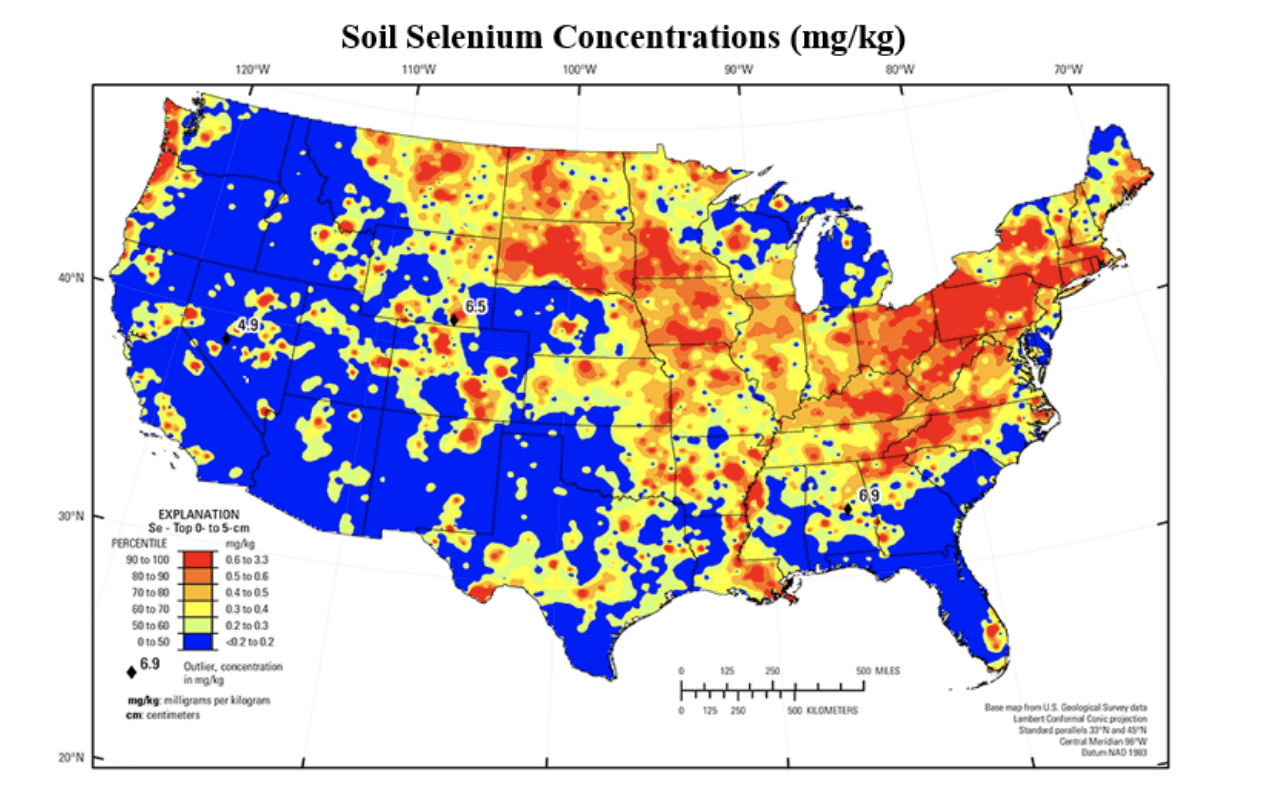Environmental Remediation
Mercury in Lakes, Rivers, and Streams:
Regions that have the highest freshwater fish mercury concentrations tend to have poor environmental selenium availability. High mercury inputs deplete selenium availability, but repletion enables natural processes to rapidly reduce fish mercury contents and restore ecosystem health.
Phase I: SAMPLLE (Selenium Assessments of Mercury Polluted Lentic and Lotic Ecosystems) Program
Mercury bioaccumulation in freshwater fish is inversely related to selenium availability and there is an urgent need to assess mercury toxicity risks in relation to selenium deficits in soils and the foods grown on them.
Based on our US EPA funded project which compiled mercury and selenium concentrations from over 14,000 fish collected across North America, we are continuing to coordinate and advise on extending these studies.
Through our efforts to establish Health Benefit Values (HBVs) of freshwater fish being consumed, we identify areas where mercury exposure risks are accentuated, particularly in regions where dietary selenium intakes are inadequate.
State, federal, and international regulatory agencies need to recognize the risks of eating fish with negative HBVs and recognize that fish with positive HBVs improve health. Our goal is to provide these agencies with the information that will enable them to dismiss outdated assumptions and better protect public and environmental health.
Phase II: SAMPLLE (Selenium Alleviation of Mercury Polluted Lentic and Lotic Ecosystems) Program
Environmental selenium deficits can be alleviated by carefully restoring the natural biological forms and amounts required to permanently sequester mercury and restore the health of freshwater fish and enhance the safety of consumers.
Selenium-dependent mercury retirement provides safe and effective mercury remediation that apply natural processes to improve the health of freshwater ecosystems as well as fish, fish consuming wildlife, and people that eat these fish.
By establishing the Health Benefit Values (HBVs) of fish being consumed by these populations, it will be possible to restore selenium to healthy levels and greatly diminish mercury bioaccumulation in fish from ecosystems where exposure risks are accentuated.
Mercury or Organic Contaminants in Soils:
Contaminants in soil can be challenging to remediate. Our solutions are low cost but highly effective and permanent.
Using our specialized approaches, low cost, long-term, wide-scale solutions are achieved. Natural processes are
supported to ensure spontaneous formation of highly stable and permanently retired forms of mercury.
Ask us about our advanced approaches for rapid and thorough remediation of soils contaminated with spilled fuels,
solvents, or other organic agents.



